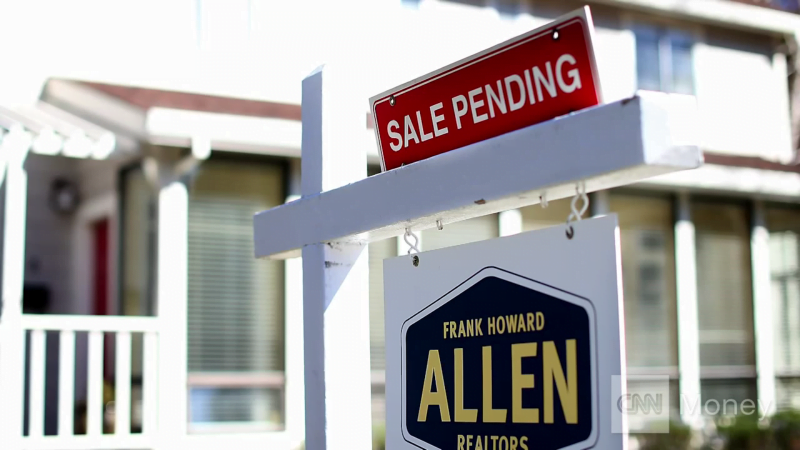Going into 2020, economists were forecasting a regular business recession. The signs were present in lower growth rates for gross domestic product (GDP) and employment figures. The Federal Reserve (the Fed) was on top of the situation, lowering interest rates in the second half of 2019 in preparation for the coming recession.
Bond market investors foresaw the slowdown, pushing the yield spread — the time-tested crystal ball for recessions — below zero in mid-2019, forecasting the next recession to arrive 12 months later.
But we’re now finding ourselves in uncharted territory. The economic fallout from the novel coronavirus (COVID-19) on top of what was expected to be a normal economic recession—defined as a decline in economic activity lasting at least six months — is throwing rainy day forecasters for a loop. Just what happens to the housing market when we are all forced to remain at home?
The transition to virtual tours and remote signings and appraisals is happening quickly. Real estate professionals are seeking to keep the housing market running, even when they and their clients are unable to attend appointments in person.
But, even if real estate professionals are able to deal with the challenges of remote buying and selling, with job losses piling on, will homebuyers and sellers still be able to support home sales?
In our modern era and in terms of being outside of normal economic rules and expectations, there are some merits to comparing the COVID-19 crisis to a natural disaster, according to economist Paul Krugman.
COVID-19 as a natural disaster
Here in California, most residents have lived through some natural disaster or another, including wildfires, earthquakes, floods and landslides. Personal experience has taught us that the economic impact from such a disaster is usually sharp, but brief. Unlike a full recession, a disaster is abrupt, and once a brief recovery period has passed – usually with the help of some government assistance – the economy may bounce back to normal.
However, natural disasters are heavily localized. A fire that rages in southern California doesn’t impact Northern California. In these localized events, outmigration to nearby, unaffected areas is a standard response, particularly in relation to forest fires, according to the Bureau of Labor Statistics. As a result, natural disasters often result in lower home prices.
In contrast, COVID-19 has reached every corner of every nation and state, causing global economic turmoil. Thus, individuals can’t simply relocate to avoid the impacts of the disaster.
COVID-19 as a modern Spanish Flu or SARS
Comparing the economic effects of COVID-19 to a natural disaster is somewhat useful, but leaves some big gaps — like the impact of what is essentially a global disaster — unanswered. The closest comparison is another global pandemic, but those are, fortunately, few and far between.
The most recent pandemic was the SARS outbreak of 2003, which was concentrated in Asia, with only eight people testing positive in the U.S., according to the Centers for Disease Control (CDC). While SARS infected just a fraction of the number of individuals infected by COVID-19 thus far, it is the closest to a modern comparison we can get.
In Hong Kong, where the SARS outbreak had a significant economic impact, even as home prices remained on-trend, home sales volume decreased by 33%-72%, according to Zillow. Once the outbreak was over (about six to eight months after it began) and social distancing measures were eliminated, home sales volume bounced back immediately.
Over a century ago, the Spanish Flu of 1918 is the closest example to COVID-19 in terms of numbers and global spread. The Spanish Flu infected one-third of the world’s population at the time.
Economic data for this period of U.S. history is less reliable, but — like SARS — the effects were overall short term in nature. The impacts continued for the duration of the pandemic and then returned to normal once the pandemic was over, according to the St. Louis Federal Reserve Bank.
The takeaway from the Federal Reserve study is that the pandemic had lasting implications for individuals, but the economy and society on a broad scale recovered quickly.
COVID-19’s lasting impact
While data is only in for the early days of the COVID-19 outbreak in China, all early indications point to trends similar to past pandemics. Home sales volume in China has plummeted by 90%-98%, while home prices remain flat, according to Zillow.
Zillow has termed this pause in activity a “wait-and-see” period for homebuyers and sellers. In California, agents are reporting clients agreeing to extensions on their purchase agreements.
Ultimately, whether or not COVID-19 has a lasting impact on the economy and home sales will depend on how long social distancing and shelter-in-place measures last.
In China, where the quarantine was fairly extreme, daily routines have been mostly restored after a short two-to-three months of quarantine measures. Here in the U.S., we won’t likely reach that point of normalcy for several months, a year or even longer.
The good news is that — unlike during the Spanish Flu — most of us are well-equipped to take on the challenges of social distancing while remaining active participants in the economy today.
For real estate, virtual tours, remote appraisals and contract extensions are quickly becoming the norm. As long as most homebuyers and sellers continue to have stable incomes, the demand is still present. Everyone will just need to have a little more patience as all players figure out how to close transactions smoothly without in-person meetings.
However, watch unemployment figures and job numbers closely. The longer the impacts of COVID-19 continue, the more jobs will be lost. The World Economic Forum recently forecasted that if COVID-19 is not eradicated within a few short months, the global economy may not recover until 2022 or 2023.
Economic forecasts are quickly evolving. Keep reading first tuesday for more updates in the days ahead.
















Thank for your article.
The markets for home price sampling selected are quite irrelevant to the US housing market. You picked China and HK markets, however, China’s housing market basically equates our stock market where the mass citizens store their assets, both heavily regulated and propped by governments, while the HK housing market downturn happened during SARS, it was a epidemic contained in Asia which was much less damaging and quicker compare to the current worldwide COVID-19 pandemic. Moreover, contagion containment in Asia countries are much more effective than US and Europe so Asia is not a great comparison.
I suggest using European housing markets where the virus pandemic is similar to US for a stronger variable comparison. I also find your articles lacking economic indicators or indices, Schiller Index is not even reviewed herein. Using broader economic data would draw a superior forecast.
Thank you.